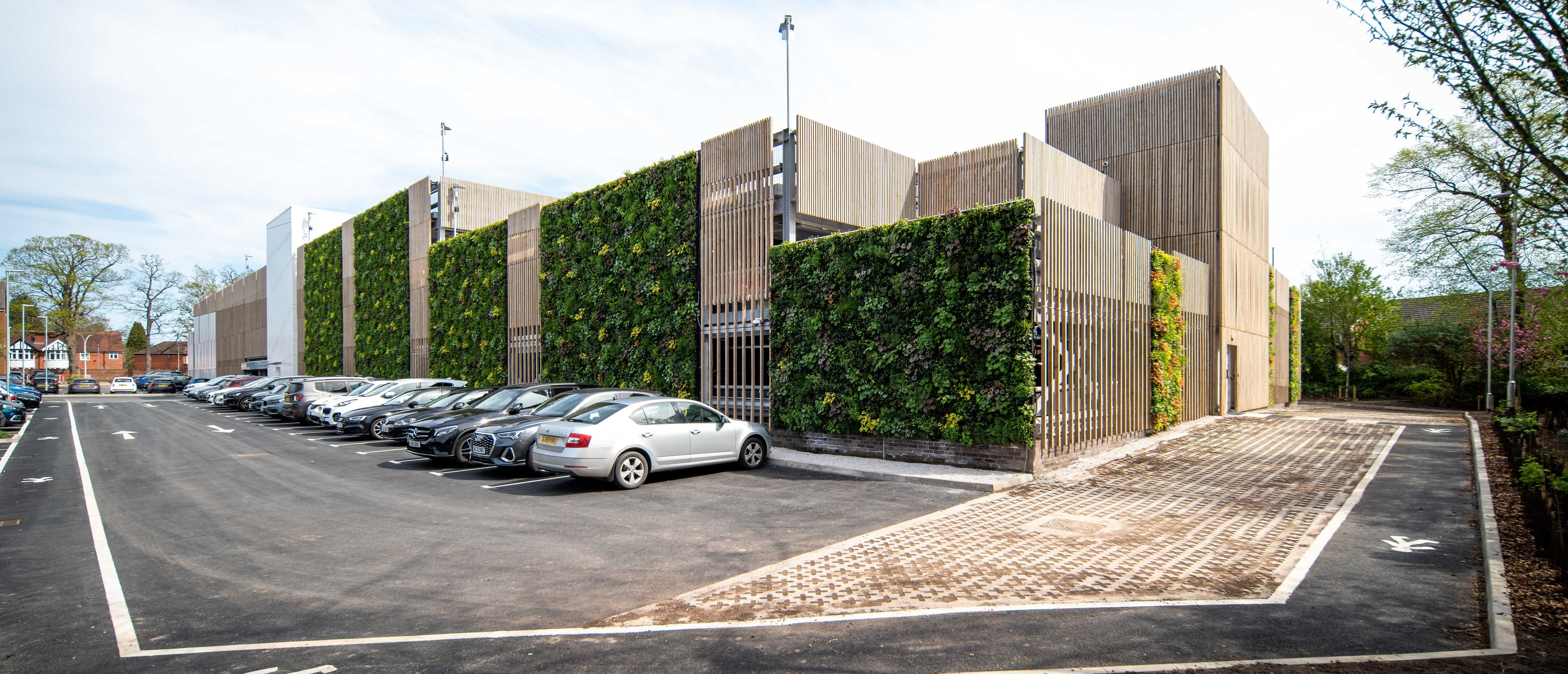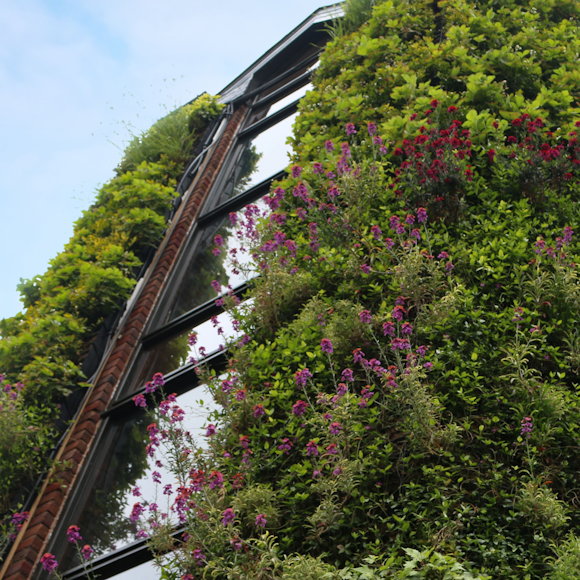The Viritopia team work with contractor companies and teams every day, so we have a good bank of questions you ask us! From ‘do you have any qualifications’ to ‘can you value engineer a living wall’, we cover the top 20 questions about living walls asked by contractors in this blog. Let’s get started:
1. Why are living walls so expensive?
Of course, it depends on what each of us class as expensive, but this is a question we are asked by contractors especially. Often, this question is asked when what is included in the cost hasn’t been properly covered or the value hasn't been clearly shown. With a higher number of plants per square metre (which guarantees better coverage and design flexibility), design, site visits, production (planting, establishing and nurtured through growth), installation and build-up materials, there is a lot that happens before a living wall is integrated on the façade.
The cost isn’t just for the product (the living wall system, including the irrigation system) itself, but the whole process, which is labour intensive.
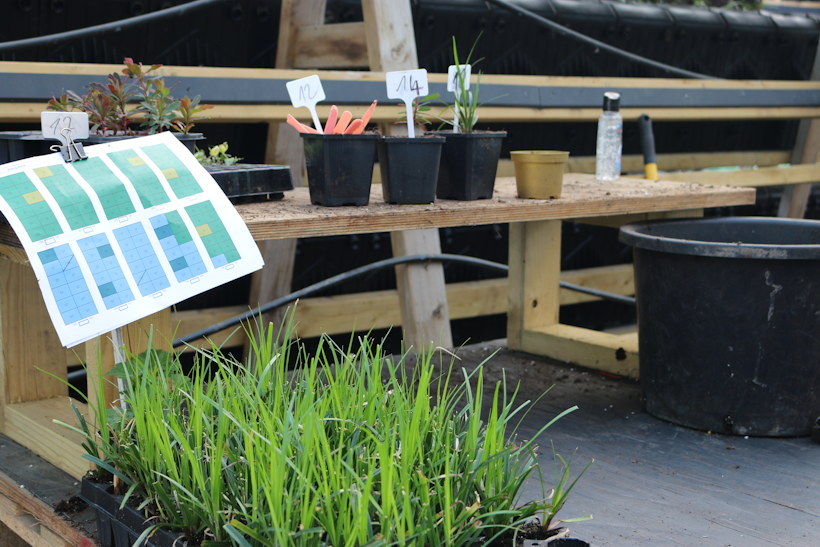
So, can you make cost savings?
The answer is yes, absolutely. If considered early on in the process, a living wall can be designed to become part of the façade, rather than an addition on top of another façade material – this saves you the expense of one of the facades. Don’t double up when you don’t need to!
Another way you can cut costs is by giving a long enough lead time which means we can contract grow. This means we plant your wall using plugs (smaller, young plants) rather than larger more established plants (think of the ones you can buy in a pot, already flourishing). For a larger contract grow, we’d need at least 12 months from design sign off to ensure full coverage when the living wall is integrated on-site.
Again, working with us early on means we can help you look at ways to integrate your living wall within your budget.
Here's an example of a living wall created from plug plants. This is for the huge project at Eden New Bailey (aka A3 Salford).
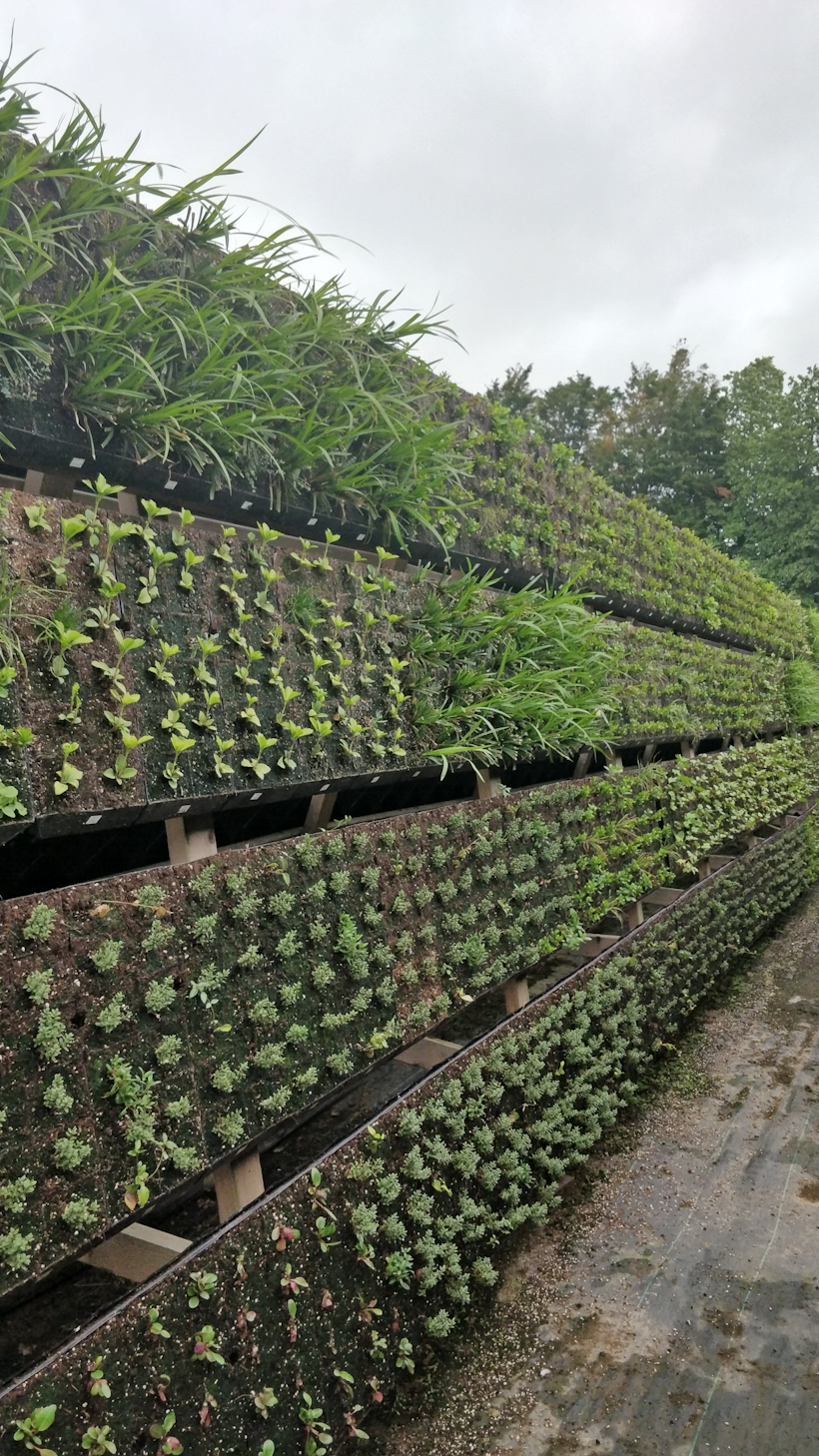
2. Are there other living/green wall companies in the UK?
There are several other companies who provide living or green walls in the UK. It is important to note that the systems however are not the same or even comparable in some cases.
- Biotecture (now owned by Mitie), who focus on hydroponics.
- Scotscape, focus on felt pocket system.
- Hedera, offer a mixture of hydroponic, pocket and screens.
- Oasis, similar to Hedera in living wall offering.
- I Want Plants, main focus is on indoor plant displays.
If you’d like to talk through the differences between the companies in more detail, please feel free to reach out to us. We’ve done extensive research and are able to offer a concise comparison to help you make your decision.
3. How does the Viritopia fire rating compare to other living walls?
The Viritopia Living Wall System has a fire rating of B,s2-d0. No living wall system will ever achieve better than this, as plants will always be combustible.
Here’s an overview of fire ratings of green wall systems in the market:
Viritopia Living Wall: B,s2-d0
Biotecture Hydroponic Living Wall: B,s3-d2
Scotscape living wall: B,s2-d0
Hedera: B,s2-d0
Oasis: B,s2-d0
Important note: watch out for living wall systems that claim a Class A rating! It’s been found out that some companies are fire testing the build-up components (so for us that would be like testing the sub-frame, membrane, and the module) without the planting medium and plants. This gives a false report.
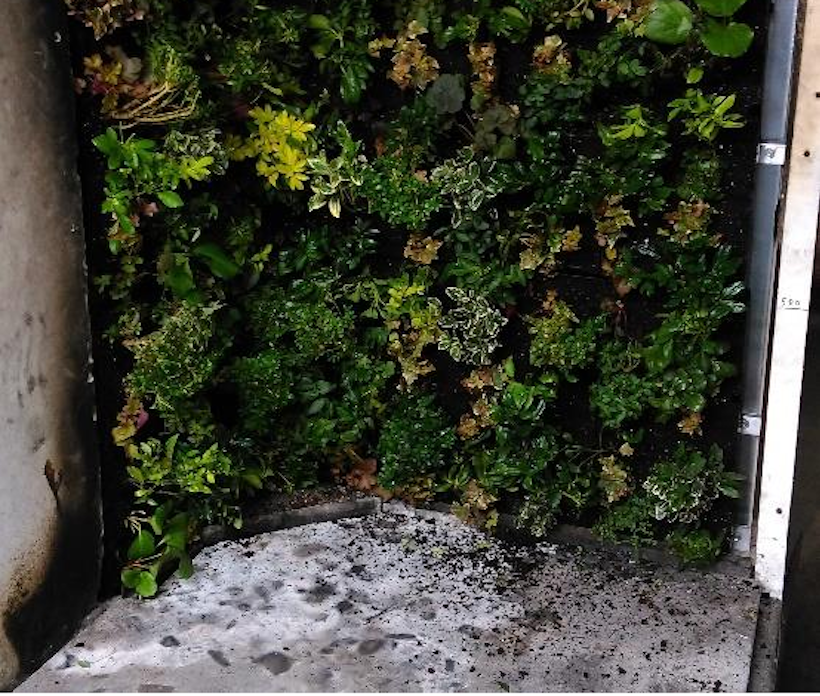
You may find these resources and guidance on fire regulations helpful:
PDF Document: Method to Limit Spread of Flame and Restrict Combustibility Guide
Online CPD (view upcoming sessions): How and Where to Design a Living Wall to Meet Fire Regulations
Blog: Living wall fire regulations explained: All you need to know
PDF report: Viritopia Living Wall Fire Strategy & Design Considerations by Hoare Lea
4. Do Viritopia have any qualifications?
Here is a list of our accreditations:
- Viritopia is a Constructionline Gold member
- In-line with CSCS
- SMAS Worksafe contractor
- Compliant with SSIP
- Trained under Site Supervisors Safety Training Scheme (SSSTS)
5. Can you value engineer a living wall?
Yes you can value engineer a living wall. Be aware, it could be proposed to replace a modular soil-based living wall with wires, climbers or troughs and ivy screens. However, this is not true ‘value engineering’ as whilst you are reducing the cost you are also reducing the value considerably. For example, in regard to plant coverage and aesthetics, you’ll never get full plant cover with wires and climbers, yet with a modular soil-based system you will. For biodiversity, soil is key.
Always be aware of the value you are getting from a system before swapping or engineering it out.
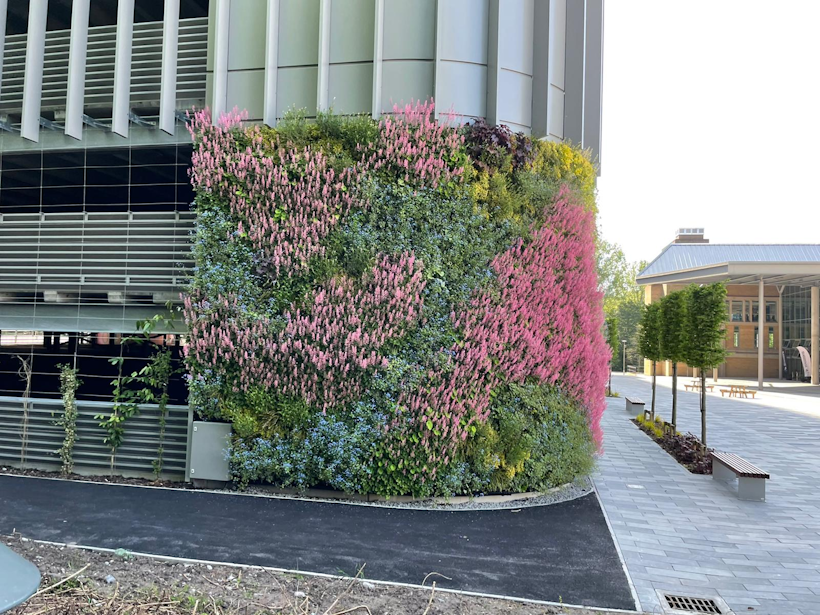
With an Viritopia Living Wall, you can value engineer the system. By procuring early, we can do a contract grow for your project, meaning we propagate the plants which is more cost effective. A simpler planting design also makes a cost saving for you.
6. Why are Viritopia living walls more expensive than Scotscape?
Viritopia and Scotscape’s systems are non-comparable. Let’s break it down and look at the separate parts so you can differentiate more easily:
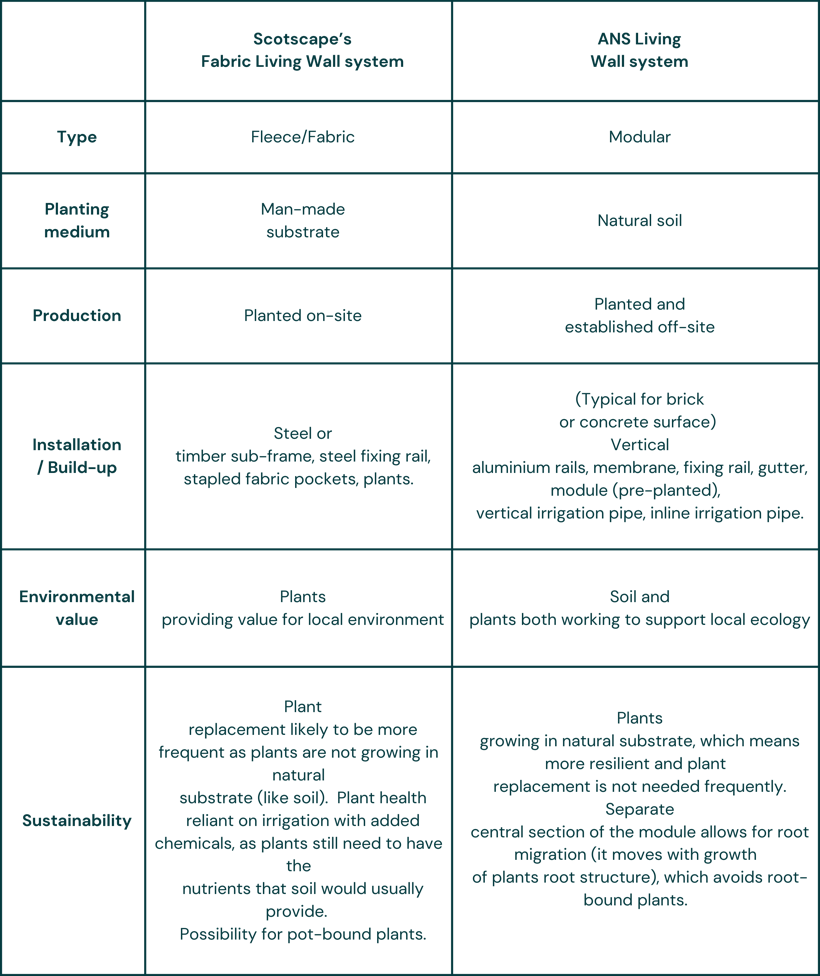
7. Are living walls a turnkey solution, are there hidden extras?
The living wall itself is a turn-key solution. We look after everything from initial concept designs, through production, installation, and maintenance. However, we do also ask for some parts to be provided by the main contractor, which is:
- Sub-frame
- Drainage (water run-off is minimal, however this is still required as precautionary measure)
- M&E
What about hidden extras? We are upfront in all proposals to make sure you know exactly what we’re providing and what you need to provide for us. A list of assumptions and exclusions is provided in all proposals.
8. Is maintenance important for a living wall?
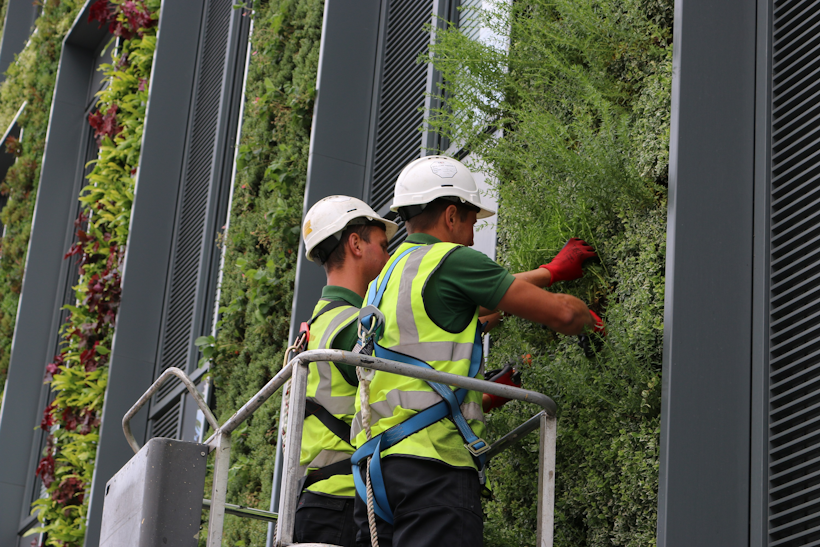
It is essential that a living wall is maintained, and the irrigation serviced on a regular basis to ensure healthy plants and the wall establishes and thrives for the long term.
When thinking about maintenance for a living wall, consider it in the same way as a garden. If it’s neglected, it will not flourish and is not likely to survive. The same applies to living walls. They are essentially just vertical gardens.
Maintenance is imperative for the health and longevity of any living wall.
9. Can I install a living wall on a north facing façade?
Yes, a living wall can be installed on a north facing façade. As with any living wall, the planting design needs to be created for the aspect of the elevation (north, south, east, or west) and general conditions (wind, shade, climate). For a north-facing green wall, we would design with shade-loving species, such as some ferns and perennial flowers. United Caps is a good example of a north-facing living wall.
10. Can I install a living wall on any aspect?
Yes a living wall can be installed on any aspect, it is simply a case of designing for the elevation and climate. To give an example, on some south-facing elevations, like at 2 London Wall Place, we were able to use Mediterranean herbs like thyme due to the high levels of sun that area was receiving. On the other hand, on the north-facing walls on the same site, we used a completely different plant palette.
It's all down to planting design.
11. What is a living wall subframe?
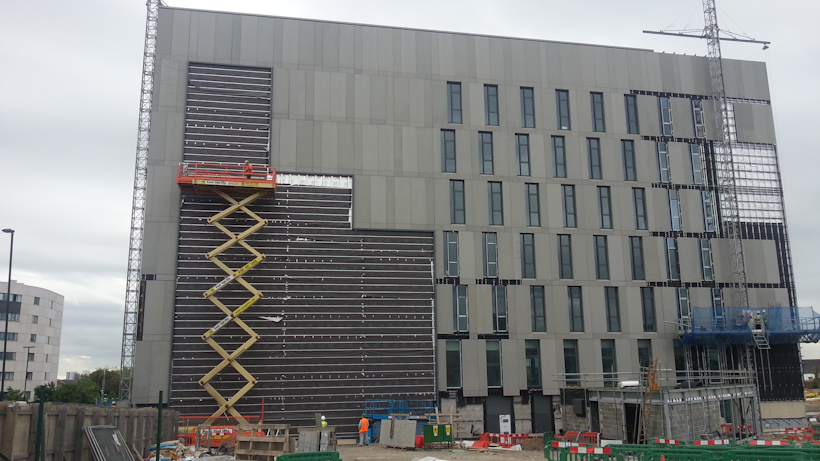
The sub-frame used for our living wall system can be concrete, steel, aluminium, timber or backing board. Anything that is structurally able to take the weight of the living wall. You may find our living wall installation guide helpful.
12. Is there a height limit on living walls?
In practical terms, there is no height limit with a living wall. The height you can build to however is capped by regulations such as fire regulations. To find out more about what you can and can’t do with a living wall, this blog is useful.
13. Can you install living walls around windows?
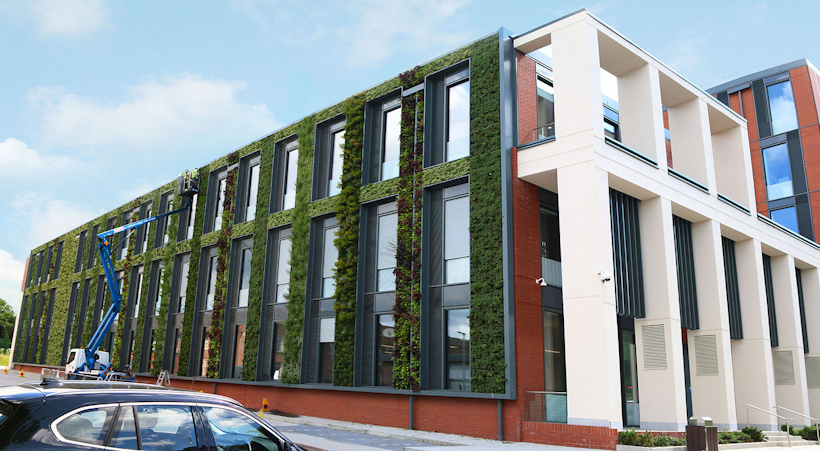
Yes, living walls can be installed around windows. As our system is modular, it makes it very simple to cut to shape. For details or considerations when integrating around windows, take a look here (we put it all on one page).
14. Do some living walls last longer than others?
Yes, how long a living wall lasts depends on the system used and the maintenance. Living wall systems based on natural processes (for example using a natural planting medium so plants are growing in their natural habitat and go through the same processes as they would planted traditionally), are more resilient and with maintenance, can last forever as opposed to systems based on man-made substates.
Under a maintenance contract, a living wall will stay healthy for as long as you like. Again, think of it like a garden. If it’s well-cared for, it will continue to flourish in full health year after year.
15. Is soil important for Biodiversity Net Gain (BNG)?
We often speak about adjusting the planting design for a living wall so it provides more value for biodiversity. Whilst this is important to get the most out of your installation (if improving biodiversity is your purpose), the plants are only half the story.
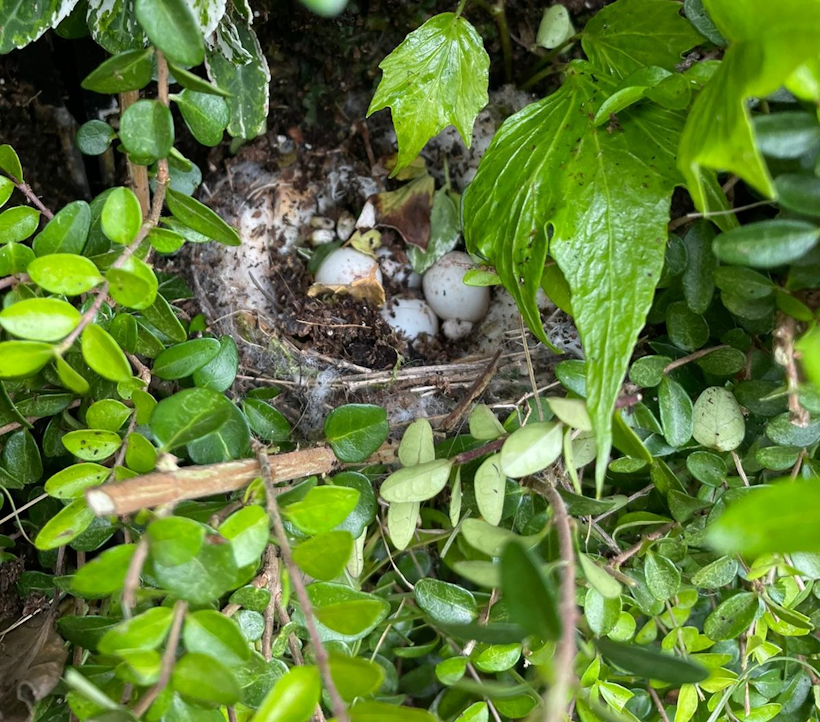
Soil is hugely important for biodiversity, and enables you to reach the right biodiversity net gain score. For the environmental success of any green infrastructure habitats, soil is key. It allows for:
- Burrowing insects
- Solitary bees
- Provides water storage/buffer
- Fungal biodiversity
- Resilience against adverse conditions
16. What can go wrong with a living wall?
There are 6 key factors that can determine whether your living wall integration will be a failure or a success. We detailed them all in this blog on What could go wrong with a living wall? 6 points to consider for your project, which you can read more about here.
- System choice
- Plant selection
- Substrate
- Irrigation and water management
- Maintenance
- Ensuring no obstacles during planning, installation, and on-going maintenance.
For more detail under each point, please read the blog!
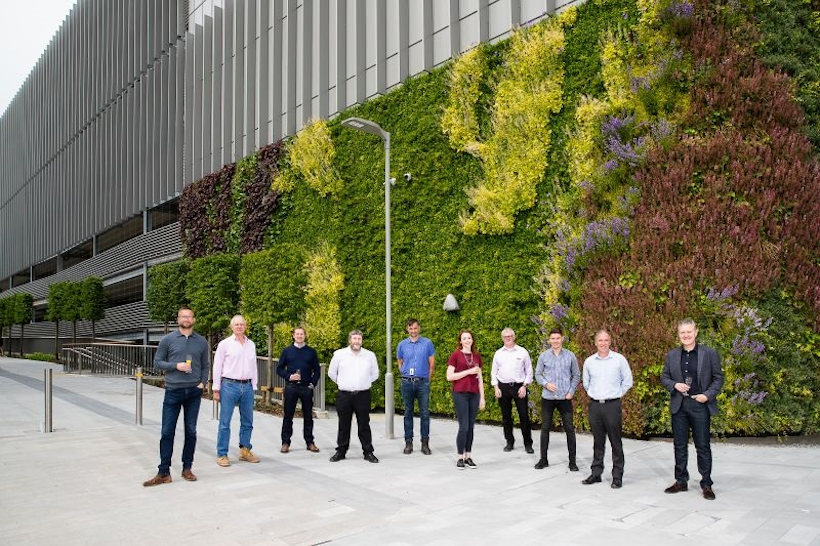
17. How much energy does a living wall use?
The only part of the living wall that will use energy on-going is the irrigation system. This is entirely dependent on the design and irrigation system structure. However, the electrical loading is minimal.
18. How much water does a living wall use?
A living wall that uses natural soil uses less water than most other substrates used in green walls. Here’s an example of water usage per week in the winter:
- Sunny wall: 16.8 litres/m2/week
- Shady wall: 7.6 litres/m2/week
19. Can a living wall use rainwater to irrigate?
Yes, rainwater harvesting can be used to irrigate a living wall, although the wall cannot be solely dependent on rainwater. To integrate rainwater harvesting effectively you need to get your living wall partner involved early on.
20. Will a living wall help me achieve BREEAM?
A living wall will indeed help you to achieve a BREEAM rating. There are several things you can focus on using that will help you:
- Native species
- Pollinators
- Rainwater harvesting
- Recycled materials
That completes our top 20 living wall questions asked by contractors. Did we answer your questions?
If you’ve got a question on living walls we haven’t covered here please do reach out to us on +44 1243 545818 or message us at enquiries@ans.global.
First time here? Here's a bit about who we are and what we do: the Viritopia team work on consulting on urban greening schemes, designing, producing, integrating and maintaining soil-based green infrastructure systems and helping developers and architects meet specific objectives (for example, biodiversity net gain targets) through these greening systems. We've been working with plants since 1996 and our aim is to help you bring nature to any urban space, whatever the challenges.
Sounds like you could work with us? Reach out to us at enquiries@ans.global and we'll be in touch to discuss as soon as we can.
